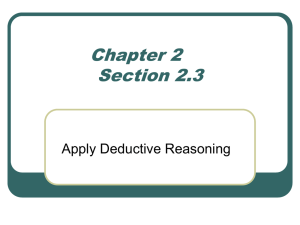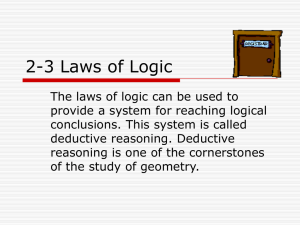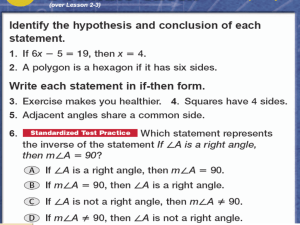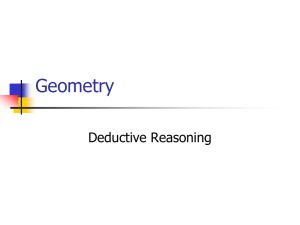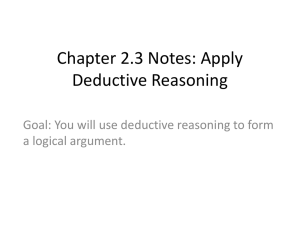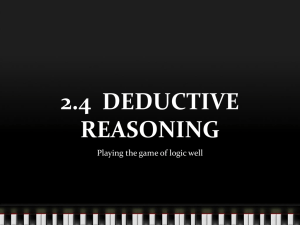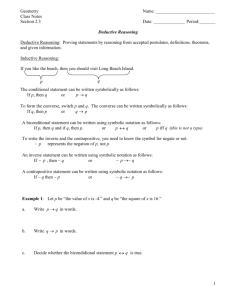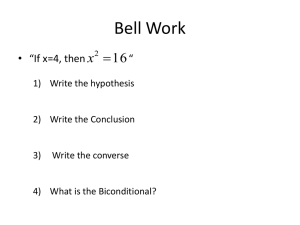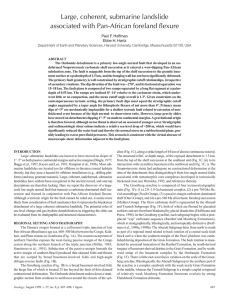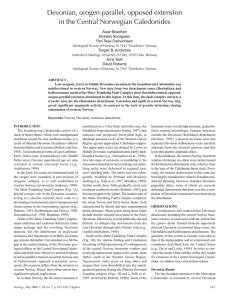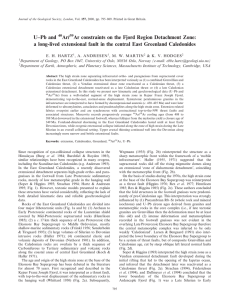Chapter 2 Section 2.3 - Ms. Carrigg's Website
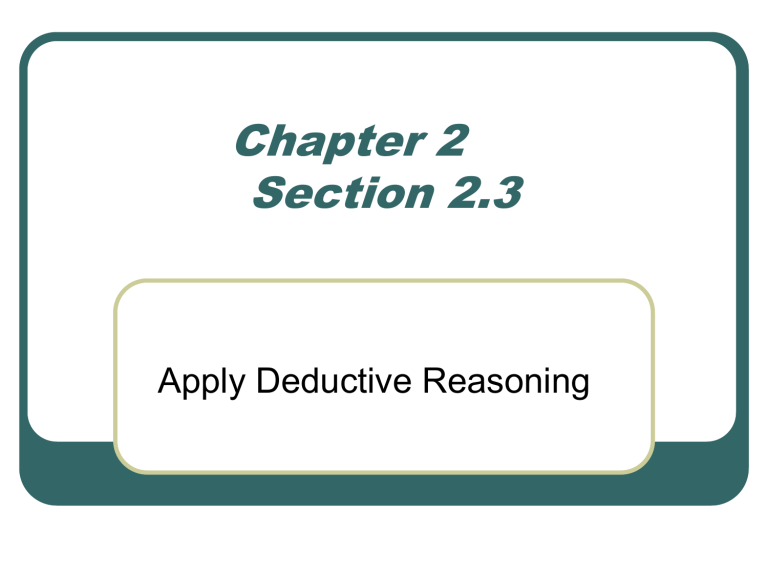
Chapter 2
Section 2.3
Apply Deductive Reasoning
Deductive Reasoning
Uses facts, definitions, accepted properties, and the laws of logic to form a logical argument.
Inductive Reasoning – uses specific examples and patterns to form a conjecture.
Law of Detachment
1.) If p, then q (true)
2.) p (true)
3.) q (true)
Example – Law of Detachment
1.) If Joe is a student at RBR, then Joe has an ID number.
2.) Joe is a student at RBR.
3.) Joe has an ID number.
Law of Detachment
1.) If you plan on attending Princeton, then you need to be in the top 5% of your class.
2.) Jaime plans on attending Princeton.
3.) Jaime needs to be in the top 5% of her class.
Does the Law of Detachment
Apply?
1.) If a dog eats Dogfood Delights, then the dog is happy.
2.) Fido is a happy dog.
3.) NO CONCLUSION.
Does the Law of Detachment
Apply?
1.) All fish can swim.
2.) Fonzo can swim.
3.) NO CONCLUSION.
Can you draw a valid conclusion from the two statements using the Law of Detachment?
1.) If the class is long and boring, then a student in the class is likely to day dream.
2.) John day dreams in science class.
Can you draw a conclusion? No Conclusion
1.) If you want good health, then you should eat vegetables and fruits everyday.
2.) Jackie wants good health.
Can you draw a conclusion?
Yes. Jackie should eat vegetables and fruits every day.
What can you conclude from the following…
1.) If Erin is the same age as Jackie, and
Jackie is the same age as Jaime, then
…
2.) If John makes the same amount as
Jose, and Jose makes the same amount as Andrew, then…
The Law of Syllogism
1.) If p, then q.
2.) If q, then r.
3.) If p, then r.
Law of Syllogism Example
If the canal is open, then the ship can go through .
If the ship can go through the canal, then the company can transport the goods.
By the law of syllogism, p
– the canal is open q – the ship can go through r – the company can transport the goods
Example: Law of Syllogism.
1.) If an angle has a measure less than 90, then it is acute.
2.) If an angle is acute, then its supplement is obtuse.
3.) If an angle has a measure of less than 90, then its supplement is obtuse.
p – if an angle has a measure less than 90 q – the angle is acute r – the angles supplement is obtuse.
Can a valid conclusion be made from statements 1 and 2? Write statement three if it applies.
1.) If the team wins, then we will celebrate.
2.) If we celebrate, then we will be out late.
3.) If the team wins, then we will be out late.
1.) If two angles are vertical, then they do not form a linear pair.
2.) If two angles are vertical, then they are congruent.
3.) No, the law of syllogism does not apply.
Determine if the law of detachment, law of syllogism or neither apply.
1.) If you drive safely, then the life you save may be your own.
2.) Sean drives safely.
3.) The life he saves may be his own.
Law of Detachment Applies
1.) Right angles are congruent.
2.)
A ≡
B
3.)
A and
B are right angles.
None Apply
